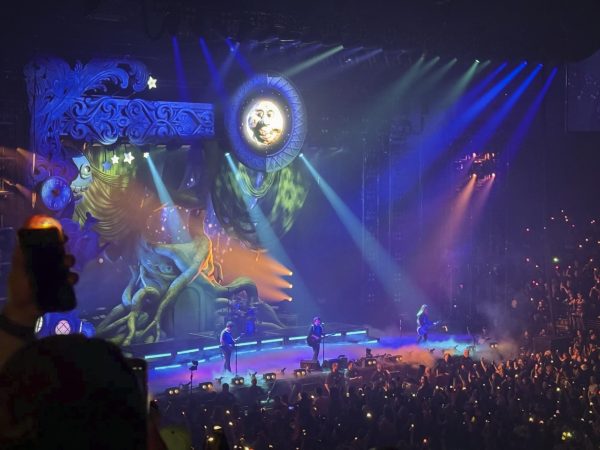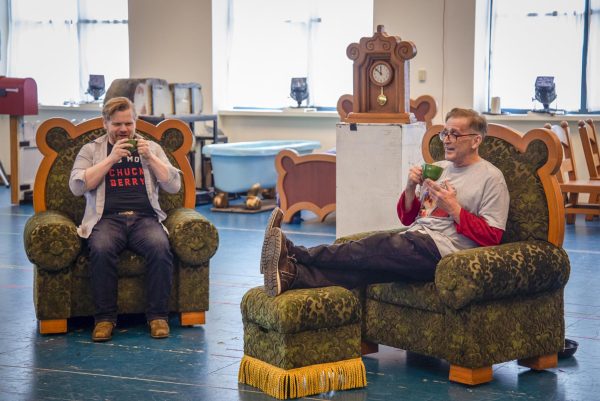Saturday, Nov. 9, The Walker hosted a conversation and Q&A with Steve McQueen. I went to the talk to hear McQueen talk about “12 Years A Slave,” which I had written a long article about in the a previous issue of The Mac Weekly. Far from helping me understand his choices, the event—both McQueen’s comments, and those of the audience—only reinforced the issues I find with the film.
Every comment from a white audience member was nothing but heaps of praise about how the film finally showed us what we had been denying, thanking McQueen for breaking the silence and for informing us what slavery really was like. The praise came during the “Q & A” section, where questions were more like personal statements with a question mark tacked on the end.
Let me interject here with a broader comment on the nature of museums. Museums are spaces that attract a very specific audience—the Center for the Future of Museums recently published data that only one quarter of museum-goers would identify as people of color. In an open letter to The Walker, several activists from Twin Cities’ communities of color asked The Walker to reexamine how public its art actually is. “Over the years we have become acutely aware of the way that art institutions are guided by an exceptionalism,” they wrote, “that will welcome works of art by select artists of African descent and other historically marginalized groups but will largely have little to no relationship with members of those communities.”
And so, unsurprisingly, the audience at this talk was overwhelmingly white, upper class and middle-aged. I belong to this group—okay, I’m not middle-aged, but I have no pretensions about my own identity. I’m a white, upper-middle class woman from a Brooklyn private school background and I go to a private liberal arts college.
The difference between those audience members and myself was why we were there. I went to hear some answers to my many questions about the film. Other people seemed to take the talk as an opportunity to publicly denounce slavery and, in doing so, absolve themselves of whatever they may feel guilty for. There was so-called “question” after so-called “question” of people standing up and lauding McQueen for his unflinching and heart-wrenching exposé on a practice that often gets glossed over in dominant historical narratives.
To those audience members, and the other ones like them: We get it. You all think slavery is awful. And it was. And it is. And this film was a striking look at slavery, and a challenge overarching understandings of it and attitudes to it.
But this film is not an opportunity for a privileged, art-appreciating, white-identified audience members to eliminate their white guilt. This film is not a one-stop-shop way to absolve oneself of any indirectly harmful effects of white privilege, or eliminate any structural inequality that stems from the institution, when we are all complicit in. Those “questions” were patronizing and
counterproductive. This is a beautiful film, and it is one man’s story, and it is not perfect by any means.
What was even more frustrating was to feel that not only were many audience members aware of any pitfalls to the film and interpretations of it, but so was McQueen. As the director, and an astute, thoughtful artist, McQueen seemed surprisingly unaware of issues that I thought were so clear in the film. At one point, Mcqueen called his filmmaking “feminist.” True, an essential part of feminism is striving for equality across all spectrums of identity, not just gender, but also race and class.
But McQueen’s comment about Patsey, who is arguably the most feminist role in the film, contradicted any claim he had to feminism. He stated that, in a way, he pitied Epps (the abusive alcoholic slave owner played by Michael Fassbender) because his behavior was driven by a hopeless love for Patsey. A reminder: Patsey is the slave whom he frequently rapes, whom his wife brutally beats, and whose back he shreds with a whip as a punishment for an imagined offense. His behavior is not love; it is obsession. It has nothing to do with Patsey.
His is fixated on her as an object of desire, not as a human. He does not see her as capable of returning complex human emotion, only as a reflection of what he creates her to be in his mind. To hear McQueen, who knows the film better than anyone, misinterpret that was like a slap in the face. To call it love is to excuse those actions. To call Patsey beautiful, like the audience member in my theater, is to blame a victim for her irresistibility.
To take this film, which is striking and beautiful, and use it to dismiss any more conversations we must have and progress that must be made around gender and race relations is careless, and a waste of a great piece of art.














Blake Ogden • Sep 8, 2019 at 5:29 am
I have seen loads of useful issues on your web-site about pc’s. However, I’ve the view that notebooks are still not nearly powerful sufficiently to be a option if you frequently do tasks that require many power, for example video editing. But for website surfing, statement processing, and a lot other typical computer functions they are all right, provided you may not mind the tiny screen size. Thank you sharing your ideas.